3-Day, 3-Season Backpacking Gear (Updated 2020)
Glorious Golden Week weather yet confined indoors apart from a morning run and biweekly foray to the local supermarket courtesy of COVID-19. It’s borderline cruel and unusual punishment for us hikers and folk who love spending time outdoors. In the last 10 years I can only think of one GW where I didn’t make it out for at least a day hike. On the plus side it has allowed some time to re-examine my current hiking kit.
Last week I took stock of my first aid essentials and managed to whittle the weight down by more than half. This time I’m scrutinising gram for gram the gear I typically carry on a three-season, three-day hike. Back in 2017 I went through much the same process and will use that as a benchmark to see if I’ve made headway towards the lofty goal of becoming an ultralight backpacker.
Cut to the chase, I’m pleased to report that I have dropped my base weight by a little over 20 percent or 1.8 kg (4 lb)! This is mostly credit to a lighter tent, sleeping pad and down jacket. These new acquisitions are also less bulky meaning I’ve been able to ditch my unwieldy 70 litre Montbell backpack and revert to my moderately heavy but comfortable 35 litre Mammut Trion Pro (it’s a mountaineering pack so stripped off some unwanted bells and whistles). Once the hiking season is given the green light choosing a replacement lightweight 45-50 litre pack will be high on the agenda.
Some weight was added by the rain pants – I always saw them a novelty, until I needed to don a pair on. My timeworn Mammut GORE-TEX Pro-Shell continues to soldier on but it’s heavy and overkill for most 3-seasons environments so the matching Outdoor Research Helium II Rain Jacket would be nice. What I particularly love is the Montbell cool parka hoodie, great for shielding you from ultraviolet rays along with being very breathable. Finally thumbs up to the Thermarest Trekker pillow case which can be stuffed with a down jacket to act as a pillow. It’s both comfy and doesn’t slip off the sleeping pad like inflatable ones of old.
3-Day, 3-Season Backpacking Gear (Updated 2020)
| Shelter | Grams | |
| Tent | MSR FreeLite 1 Ultralight | 1130 |
| Footprint | Universal 1 Person | 140 |
| 1.27 kg | ||
| Sleep System | Grams | |
| Sleeping bag | Nanga 380SPDX | 700 |
| Bag liner | Montbell Warm Up Sheet | 205 |
| Sleeping pad | Nemo Tensor Insulated Regular | 425 |
| 1.39 kg | ||
| Pack | ||
| Backpack | Mammut Trion Pro 35+7 | 1520 |
| 1.52 kg | ||
| *Clothing (Worn) | Grams | |
| Top | Millet Kuhtai wool zip | 150 |
| Hoodie | Montbell Cool Parka Men's | 181 |
| Pants | Phenix Alert Pants | 364 |
| Cap | Mammut Runbold | 61 |
| Underwear | UA Original Series 6" Boxerjock | 66 |
| Gloves | Berghaus trekking mesh glove | 26 |
| Socks | Darn Tough Light Hiker Micro Crew | 63 |
| 0.91 kg | ||
| Clothing (Packed) | Grams | |
| Beanie | Mammut Merino Helmet Beanie | 19 |
| Thermal bottoms | Uniqlo Heattech Extra Warm | 178 |
| Thermal top | Polypropylene crew top | 144 |
| Socks | Darn Tough Light Hiker Micro Crew | 63 |
| Underwear | UA Original Series 6" Boxerjock | 66 |
| Down jacket | Montbell Plasma 1000 | 130 |
| Rain pants | Outdoor Research Helium | 190 |
| Jacket | Mammut Quantum II GORE-TEX Pro-Shell | 375 |
| 1.17 kg | ||
| Cook System | Grams | |
| Pot | Evernew Ti Mug Pot 900 | 99 |
| Mug | Snow Peak Titanium 450 | 67 |
| Stove | Primus Femto Stove P-115 | 56 |
| Lighter | Butane lighter | 25 |
| Spoon | Humangear GoBites Duo | 22 |
| Towel | Quick dry | 18 |
| Water bottle 1 | Nalgene wide-mouth 1 litre | 178 |
| Water bottle 2 | Platypus 2.5 litre | 36 |
| 0.48 kg | ||
| Electronics | Grams | |
| Handheld GPS | Garmin Oregon 600t with batteries | 218 |
| Smartphone | Huawei P20 lite | 162 |
| Headlamp | Black Diamond SpotLite 160 Lumens | 54 |
| 0.54 kg | ||
| Toiletries | Grams | |
| Toothbrush | In plastic holder | 27 |
| Hand sanitiser | Saraya brand 40 ml | 40 |
| Toilet paper | Kirkland Signature | 60 |
| Emollient cream | Sudocrem | 30 |
| 0.16 kg | ||
| Misc. | Grams | |
| Stuff sacks (2) | Sea to Summit Ultra-Sil | 70 |
| Food bag | Plastic film | 7 |
| Wallet | Granite Gear trail wallet | 9 |
| ID/bank | Credit card/cash | 40 |
| Key | House key | 18 |
| First aid | Granite Gear First Aid Air Pocket | 117 |
| Sunglasses | Oakley Half Jacket 2.0 sport | 27 |
| Map | Yama to Kogen Chizu | 33 |
| Compass | Suunto A-30 L CM Explorer | 32 |
| 0.35 kg | ||
| *Photography | Grams | |
| Camera | CANON PowerShot G7 X Mark III | 318 |
| 0.32 kg | ||
| *Consumables | Grams | |
| Gas canister | Primus Power Gas IP-110 | 181 |
| Toothpaste | Travel size tube | 17 |
| Food | Based on a 3-day hike | 2100 |
| Water | Most carried at any one time | 2 litres |
| 4.30 kg |
Purchased after September 2017
Total base weight: 6.89 kg
Consumables incl water: 4.30 kg
Camera: 0.32 kg
Fully packed: Including food, 2 litres of water and camera gear 11.59 kg
.
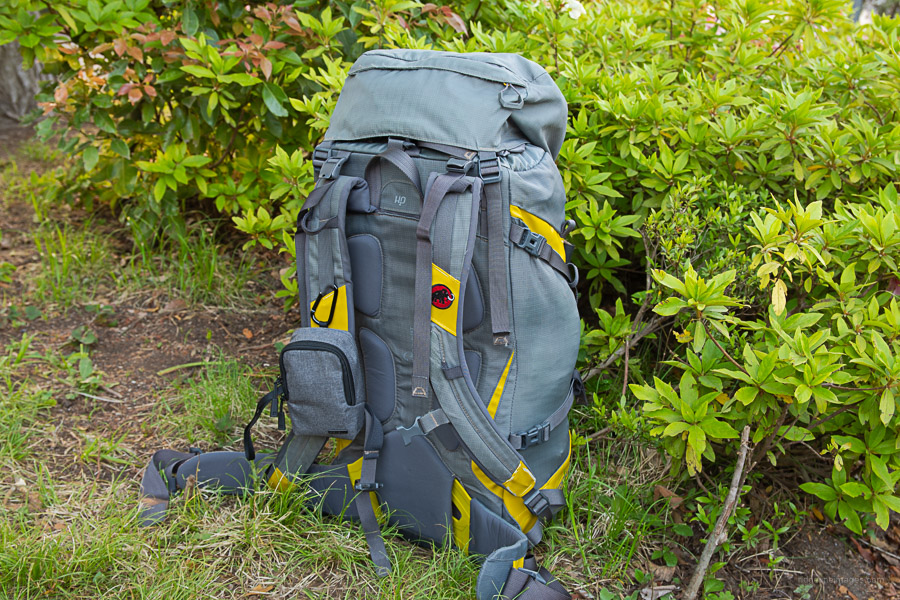
Mammut Trion Pro 35+7.
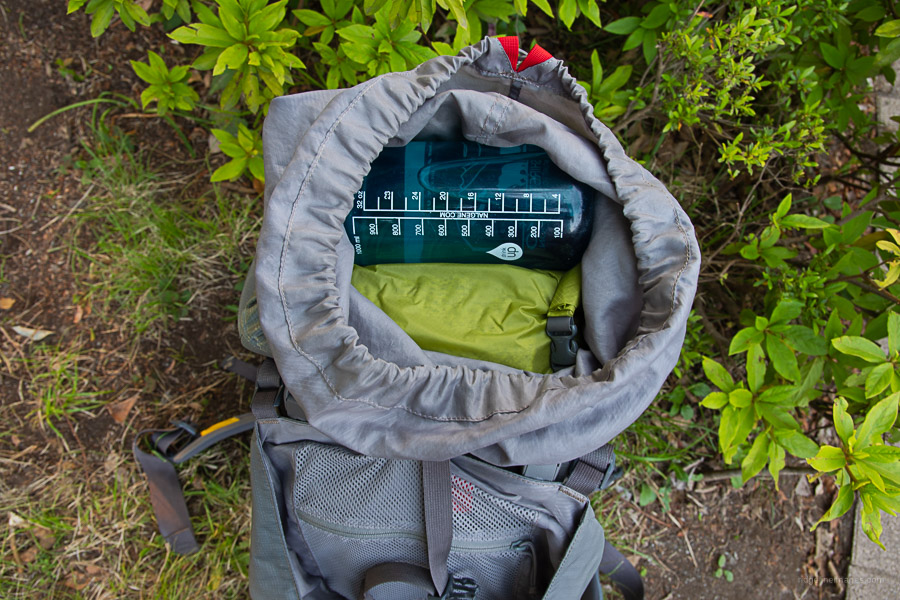
Draw top collar for extra storage.
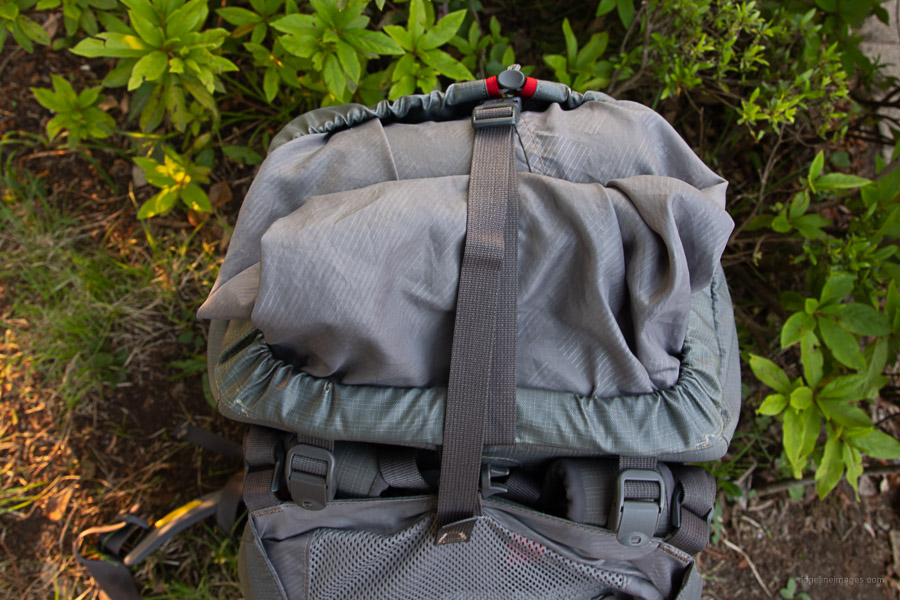
Draw-top closure strap.
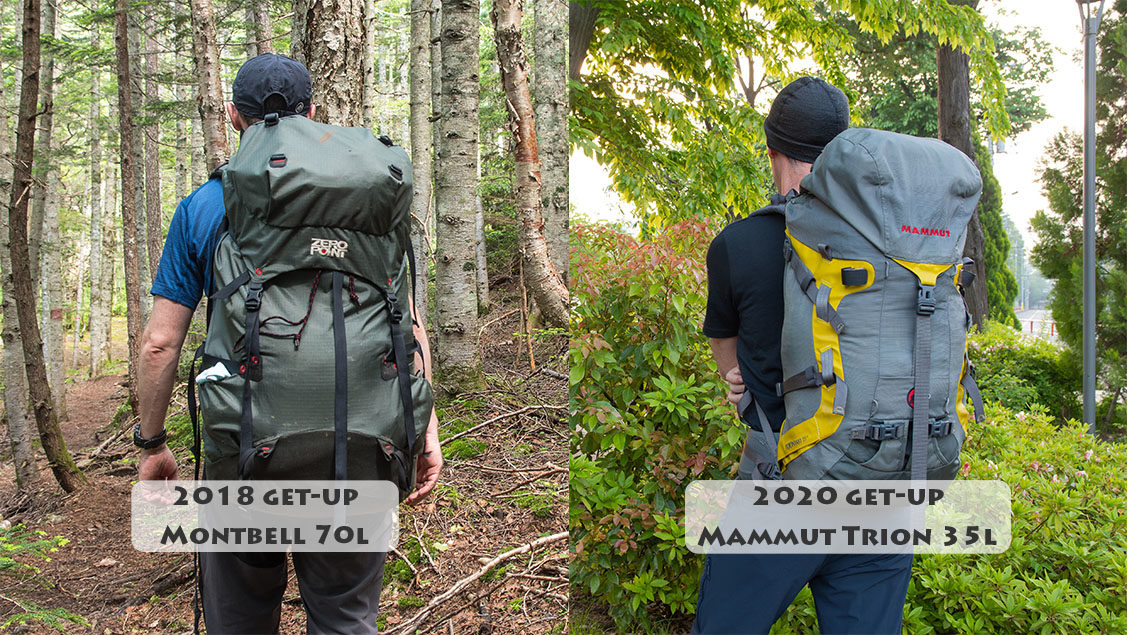
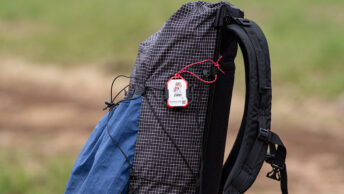
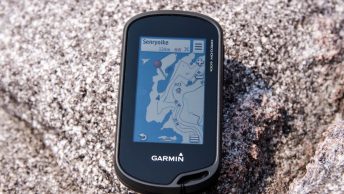
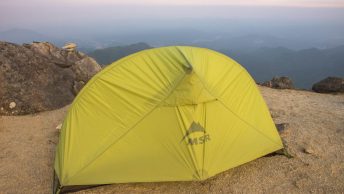
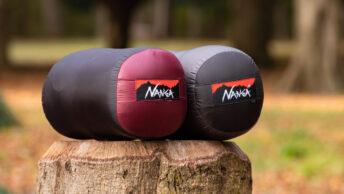
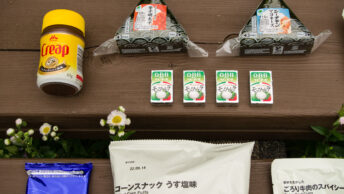

Love your list! That’s a great idea to downgrade to a 35L bag instead of a 70L, I’m still using a 70L and have a 30L day bag, but I think it could be used for an overnight or two.
I’ve been using an ultralight tent from Big Agnes (from my home state of Colorado) a Fly Creek UL, it’s something like 1.5/2lbs, it’s a solid tent. The only thing I don’t compromise is my coming system, I use a classic MSR Whisperlite, I don’t understand why people use those pressurized fuel cannisters, they aren’t refillable or recyclable, seems like such a waste.
I can second a pair of rain pants, my wife and I got downright soaked from the torso down (I had my trusty BD Stormline) while hiking between huts in the mountains outside of Omachi. It doesn’t really downpour in the CO Rockies like here in Japan.
I’m surprised you lug an DSLR into the mountains, I stopped a while ago, I’ve been incredibly impressed with my Pixel 3 and I guess iPhones are good….
Thanks for reading, Patrick. Researching for a new tent I did consider Big Agnes but, in the end, I settled on the MSR Freelight 1 which is also reasonably lightweight. I agree, while easy-to-use and low-maintenance canister stoves are pretty wasteful although where I live, they can be “recycled” through the trash collection. It would be far better though if they could be refilled. I used to haul my DSLR camera around on overnight hikes but in the end, I didn’t think it was worth carrying the extra 1.5 kg. These days I shoot with a compact Canon PowerShot which does the trick most of the time.
Oh wow, your area recycles the metal canisters? I’ll have to see if my town does, we are a bit rural so they may not. PowerShot’s a nice small camera, I had one years ago, loved the pictures it took until I dropped it and broke it. I wonder if they still make the Elf, that was even smaller.
It’s looking like it will be quite a while until we can get in the mountains, but it seems like in my area (Machida) that people are not exactly subscribing to the prefectures “don’t go out policy”. Happy trip planning!
Hi David,
https://www.youtube.com/watch?v=YW_edH6Npq8&list=PLJ4xiYN_xzIkHHI2dIeU4fmrsXPQeWO-T
Timestamp from 1.20in: A Dutch ultralighter gearlist. Have a look at the backpack, new rain jacket technology, and the rain kilt. I will order the Aegismax Windhard quilt through Aliexpress. I’ve cut quite a bit of pack weight using his tips.
andy
andy
He’s put together a nice bit of kit. The ‘non wet out’ North Face Gore-Tex Shakedry jacket looks good. I just read the Aegismax Windhard quilt is a knock off copy of the Enlightened Equipment Revelation, rated to 40F (5C) but for about a third of the money!
The most advanced backpacks in my opinion are the customizable ultralights made by cottage industry specialists, mainly in USA. These frameless packs are constructed of Dyneema (cuben fibre), in the ’90s used for yacht sails in the America’s Cup — superstrong, light, and waterproof. That YouTube guy had an Atom (UK), but also take a look at the Waymark EVLV o r Palante V2). These packs are 35 litre and weigh 60 — 70% less than your Mammot. Also, Lanshan Pro 1 UL tent is a good one.
sleeping bags — Aegismax : yes, a very good copy. And this lighter version:
https://www.youtube.com/watch?v=MY1bJPSZWnY
Sleeping bags — yes.
You’re spot on about the ultralight packs. A couple months after writing this post I purchased a KS ultralight gear pack – the 48 L KS 50. The packs are made by French expat Laurent Barikosky who is based in Aichi. Main body; 200D Spectra Diamond ripstop, front pocket X-pac VX 07 blue along with an anatomic padded hip belt, 3D mesh back with an internal foam pad and external aluminium frame set. Even with these options it weighs in at a respectable 630 g (1 lb 6.2 oz) which as you say is 60 percent less than my old Mammut pack. Stripped down packs come in at a feathery 360 g (12.7 oz). Later in the year after taking the pack on a few more overnighters I intend to write up a full review. Needless to say initial impressions are rather positive.
Last mail from me today — Great kit, David. I bet that’s made life much easier. Hadn’t heard of KS : good luck to him; seems to produce a good range of stuff. Interested to read your review of the pack. In the future, I may buy an Atom w/ load lifters and a removable padded hip belt.
On a side note, off on Saturday (weather permitting) for a loop hike from Sasago Station (Chuo Main Line) to Seihachi (1593m) and Honjagamaru (1630m). The writer is an experienced mountain trekker.
https://tumeketina.com/2017/05/29/day-hike-from-tokyo-seihachiyama-%E6%B8%85%E5%85%AB%E5%B1%B1/
Other stuff: The two most popular thru hiker YouTubers are Darwin (Darwin on the Trail), and Dixie (Homemade Wanderlust). Both are balanced, comfort-level UL hikers. They hike for months on end, daily. Their gear lists are the result of tremendous long term stress-testing. I really like that they use budget gear when it does the job (the BRS UL stove is an example; I have one), though they would get reduced affiliate revenue. Darwin uses Enlightened Equipment quilts; AegisMax does a very good copy. He uses a Snow Peak Ti mug; I bought a Lixada 650. Has 80% 5 star Amazon reviews, and is half the price of the Toaks 650, and an exact copy, down to the stuff sack, even. Lixada and Toaks both made in China, maybe in the same factory (like gas canisters mostly made in the same factory in Korea for different brands).
New product for me : to clean his pot, Darwin uses a Lightload (brand name) compressed towel (see company website, and its FAQs tab for details). Tiny, made of wood pulp, so biodegradable w/ an expiry date. Interesting that this style towel is sold in Daiso 100 yen stores (and also made of 100 % pulp, it seems). Bought a pack today from Daiso to try out. Not much to lose, I figure.
https://www.liload.com/
https://youtu.be/te8KFnpB7Jc
Darwin is certainly the man when it comes to the intricacies of UL and long-distance hiking. Been following his channel for a couple of years now. Haven’t heard of Homemade Wanderlust but will take a look. I’ve gotten some great mileage out of my Snow Peak Single Wall 450 Titanium Cup (in Japan at least they no longer sell ‘Darwin’s’ 700 ml version). Also recommend the Evernew Ti Mug Pot 500 (900). Those Daiso hand towels look pretty darn good and probably can’t hurt throwing one in a pack pocket.
Lighload Towels even make a huge beach towel of wood pulp.
Lyocell towel (wood pulp) : yesterday on the Kaji Hills hiking course, used one to clean my soup cup; another for sweat (attached to my shoulder strap). Very light and dries fast. Will keep probably.
The most popular hiker on YouTube (subscribers — over half a million! ) is Kraig Adams, a young American. Hikes globally. No talking, therapy music, badass drone footage, editing skills, “how I did it” section at the end, usually. Plenty of non-hikers watch for the scenery and relaxation, as the comments section suggests. If I were to try to make money from my hiking trips, this is what I’d try. From Iceland (check the view count !) :
https://youtu.be/6A5HY7hDeQA
On a Reddit thread, a UK hiker suggested industrial gloves as being a/ the best quality
b/ cheap. I happened to see some Showa industrial gloves in my local My Basket mini supermarket (of all places). They were 250 yen (!)– nothing to lose at that price.
Here’s the spec sheet — if these work, they will be legit 3 season gloves to deal w/ rock scrambles and frequent steep descents where we breakfall w/ branches
https://www.showagloves.com/showa-341-advanced-grip?gi=pk47l0rpo7ll1mmhitcth70li6
It’s exactly the type of glove that my wife carries when she goes hiking! As you say great for rock scrambles and gripping onto chains and if they get lost or ruined they’re dirt cheap to replace. Hardware stores can be a treasure-trove of things that can be rejiggered for the trail.
Yes. Those gloves weigh 48 oz. Great for rugged areas like Yatsugatake in particular, esp. handling chains in the wet. Will test out tomorrow on Mt. Takanosu (can’t believe I’ve never done that one).
The other recent find is paper soap tickets in a few Daiso 100 yen stores, either in the outdoor section or the soap section. In 4 colours. Each pack weighs 11.9oz and contains 20 tickets. The least scented is the blue one. Carry these all the time now. https://kosodate.love/?p=20727 (Scroll down a bit for images.)
sorry — those oz should read grams
Yesterday, saw a young Japanese hiker with a rolltop UL backpack (my eyes nearly popped out of my head; first time to ever see one on trail). On complimenting him on his cool pack, I asked the brand. Yamatomichi. I’ve never heard of them. He had on their UL shorts too.
https://www.yamatomichi.com/
Last year I paid a visit to their factory shop in Kamakura to check the fit of their signature ‘ONE’ backpack. Unfortunately, I was between torso lengths so opted instead for a KS ultralight pack (I asked if they could customise the torso length but they said it wasn’t possible unlike KS ultralight can do). Aesthetically I think the Yamatomichi packs look nicer but they are also more expensive and their lead time from ordering to arrival is 4-5 months as opposed to KS packs which is only 3 weeks!
If you have time, please read Tullochgorum (the first comment in the thread) I have a lot to learn about base and mid layers; (Climashield — Darwin’s Torrid Apex jacket). And I was very slow to get to UL gear). https://youtu.be/Nu_ZMLf6dKM
Here you go. I’ll update when I get a tent, battery pack etc. for much longer hikes.
https://lighterpack.com/r/8i3q89
The pack is KS. Atom is down to 20% production capacity at the moment
I found these useful:
https://frugalhiker.blogspot.com/
https://lighterpack.com/r/214agl
You’re heading towards a nice base weight and getting things dialled in nicely it seems. Notice you carry a Sawyer mini which I’d hadn’t given much thought to. Perhaps once or twice a year when I’m wary of the water I drop in a Taharmayim tablet or boil the water if practicable. Still wrapped with the MSR FreeLite 1 which I pair with the Fast & Light body in the shoulder seasons bringing the tent weight down to 770 grams. Cheers for the links I’ll take a gander.
770 g for a tent set-up is really great — that’s about as light as you can go before the DCF route, which is either Zpacks or Locus Gear, probably. And expensive, definitely
That 130g Montbell Plasma you’ve got remains the most insane piece of materials science I’ve come across over the whole UL spectrum
My winter clothing:
Base layer — BrynjeSuper Thermo long sleeve, black, with shoulder inlay. 40 euro
Technical mesh, worn by Hilary when he summitted Everest. Mesh traps warm air, but moisture moves through the garment to the mid layer, leaving the mesh only slightly damp, but not wet. Amazing really. Recommended by most Antarctic trekking companies. You need guts to put this thing on — and your wife will laugh her head off.
https://www.brynje-shop.com/en/sportswear~c12/brynje-super-thermo-shi
Mid : Far Pointe Alpha Fleece crewneck (large, 110 g). 75 usd
Outer: Cumulus puffy synthetic (can hike in it, dries v. fast, much warmer than down, doesn’t clump, Pertex shell is bomber in wind) 160 euro / 265 g in XL
https://cumulus.equipment/intl_en/men-jacket-climalite-pullover.html
Hands : Montbell 200 weight mittens 2300 yen
Rain/ wind shell mittens = 12 g cut down medical shower sleeves, 330 yen
https://amzn.to/3fIh5M7
Legs : thermal leggings (Maruetsu supermarket 800 yen) Size LL, 800 yen
(pants = too heavy, expensive, constrictive / compression tights : errr…too tight)
Wind pants: polyester size LL (Workman Plus physical store , Todoroki) 71 g, 399 yen
These 2 garments have kept my legs warm to – 2 celsius
Todoroki Valley 5 mins from store, nice pizza at Otto Restaurant mid walk, — visit the store, and make a day of it if you wish
Head : 100 weight black fleece beanie, 23g (Decathlon jp 240 yen)
Gets only slightly damp; reverse it to dry it out. Merino wool is terrible — gets wet, stays wet.
Neck: 200 weight fleece gaiter (and face warmer) 45 g , 199 yen Workman Plus store (see above). Cut off the cinch cord. Much better than a wool buff
Feet: NatureHike 13 point crampons, 340 g, Aliexpress 2200 yen. Well-made, cheap. working well so far
Thermometer: digital , Daiso 100 yen store. Good for gear testing